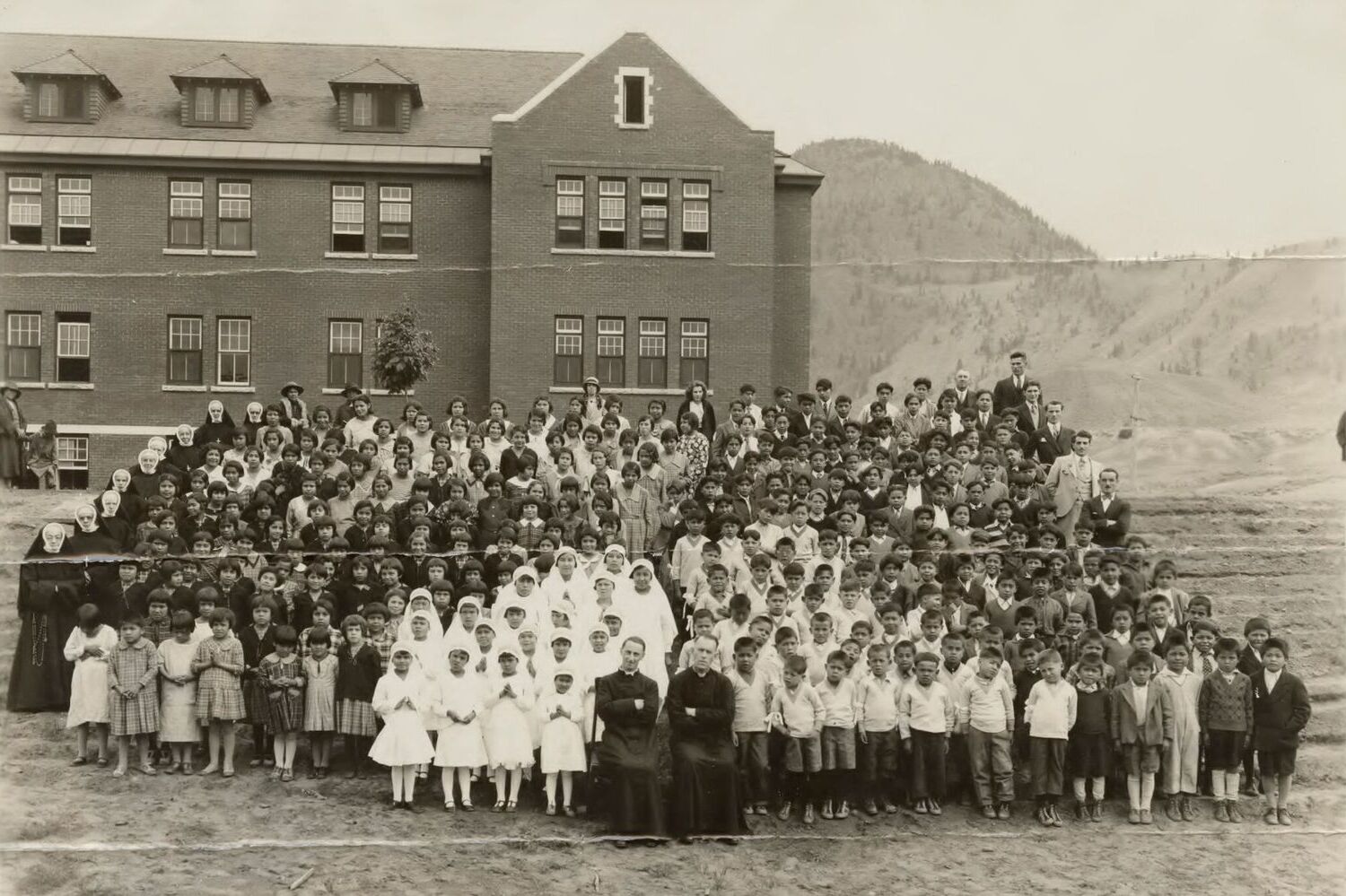
Residential schools in Canada were institutions designed to assimilate Indigenous children into Euro-Canadian culture. These schools operated from the late 19th century until the late 20th century. Why were they created? The Canadian government and churches aimed to "civilize" Indigenous children by erasing their native languages, traditions, and identities. What happened in these schools? Many children faced harsh conditions, including physical, emotional, and sexual abuse. How many children attended? Over 150,000 Indigenous children were forced into these schools. What is the legacy? The impact of residential schools has left deep scars on Indigenous communities, contributing to ongoing social and cultural challenges. Understanding this history is crucial for reconciliation and healing.
Key Takeaways:
- The residential school system in Canada aimed to assimilate Indigenous children, causing intergenerational trauma and loss of culture. Efforts toward reconciliation and education are crucial for healing and understanding.
- Residential schools in Canada had a devastating impact on Indigenous communities, leading to intergenerational trauma and loss of culture. Apologies, support, and education are essential for healing and reconciliation.
The Origins of Residential Schools in Canada
Residential schools in Canada have a long, complex history. These institutions were established with the intent to assimilate Indigenous children into Euro-Canadian culture. Here are some key facts about their origins.
-
The first residential school in Canada opened in 1831 in Brantford, Ontario. It was known as the Mohawk Institute.
-
Residential schools were primarily run by Christian churches, including the Roman Catholic, Anglican, Methodist, and Presbyterian denominations.
-
The Canadian government began funding residential schools in 1874, solidifying their role in the assimilation policy.
-
The Indian Act of 1876 gave the government control over many aspects of Indigenous life, including education, which led to the expansion of residential schools.
-
By the 1930s, over 80 residential schools were operating across Canada, with thousands of Indigenous children enrolled.
Daily Life in Residential Schools
Life in residential schools was harsh and often traumatic for the children who attended. The following facts highlight some of the daily experiences faced by students.
-
Children were often forcibly removed from their families and communities to attend these schools.
-
Students were forbidden from speaking their native languages and practicing their cultural traditions.
-
Many children experienced physical, emotional, and sexual abuse at the hands of school staff.
-
The schools were often overcrowded, with poor living conditions and inadequate food.
-
Education focused more on manual labor and religious instruction than academic learning.
Impact on Indigenous Communities
The legacy of residential schools has had a profound impact on Indigenous communities in Canada. These facts illustrate some of the long-term effects.
-
Many survivors of residential schools suffer from intergenerational trauma, affecting their mental health and well-being.
-
The loss of language and culture has had a lasting impact on Indigenous identity and community cohesion.
-
Residential schools contributed to the breakdown of traditional family structures and parenting practices.
-
The Truth and Reconciliation Commission of Canada (TRC) was established in 2008 to document the experiences of survivors and promote healing.
-
The TRC's final report, released in 2015, included 94 Calls to Action to address the legacy of residential schools and promote reconciliation.
Government and Church Apologies
In recent years, both the Canadian government and various churches have issued apologies for their roles in the residential school system. Here are some key moments.
-
In 1998, the Canadian government issued a Statement of Reconciliation, acknowledging the harm caused by residential schools.
-
The United Church of Canada apologized for its role in residential schools in 1986 and again in 1998.
-
The Anglican Church of Canada issued an apology in 1993.
-
The Presbyterian Church in Canada apologized in 1994.
-
In 2008, Prime Minister Stephen Harper issued a formal apology on behalf of the Canadian government.
Efforts Toward Reconciliation
Efforts to address the legacy of residential schools and promote reconciliation are ongoing. These facts highlight some of the initiatives and progress made.
-
The Indian Residential Schools Settlement Agreement (IRSSA) was reached in 2006, providing compensation to survivors.
-
The National Centre for Truth and Reconciliation (NCTR) was established to preserve the history and legacy of residential schools.
-
Orange Shirt Day, held annually on September 30, raises awareness about the impact of residential schools and honors survivors.
-
Many Indigenous communities are working to revitalize their languages and cultural practices.
-
Educational programs and curricula are being developed to teach Canadians about the history and legacy of residential schools.
The Role of the Truth and Reconciliation Commission
The Truth and Reconciliation Commission (TRC) played a crucial role in documenting the experiences of residential school survivors and promoting healing. Here are some important facts about the TRC.
-
The TRC was established as part of the Indian Residential Schools Settlement Agreement in 2008.
-
The commission held seven national events across Canada to hear from survivors and their families.
-
Over 6,750 survivor statements were collected by the TRC.
-
The TRC's final report, released in 2015, included a comprehensive history of residential schools and their impact.
-
The 94 Calls to Action outlined by the TRC address various aspects of reconciliation, including education, health, and justice.
Ongoing Challenges and Future Directions
Despite efforts toward reconciliation, many challenges remain. These facts highlight some of the ongoing issues and future directions for addressing the legacy of residential schools.
-
Many survivors continue to struggle with the effects of trauma and abuse experienced in residential schools.
-
There is a need for greater support and resources for mental health and healing programs for survivors and their families.
-
Efforts to revitalize Indigenous languages and cultures are ongoing but require sustained support and funding.
-
Education about the history and legacy of residential schools is crucial for fostering understanding and reconciliation among all Canadians.
-
Continued collaboration between Indigenous communities, governments, and organizations is essential for addressing the legacy of residential schools and promoting healing and reconciliation.
Reflecting on Residential Schools
Residential schools in Canada left a lasting impact on Indigenous communities. These institutions aimed to assimilate Indigenous children, often leading to loss of culture, language, and identity. Many survivors faced physical, emotional, and sexual abuse. The Truth and Reconciliation Commission (TRC) documented these experiences, highlighting the need for healing and justice.
Understanding this history is crucial for reconciliation. Acknowledging the past helps us support Indigenous communities in their ongoing recovery. Education about residential schools fosters empathy and awareness, paving the way for a more inclusive future.
Efforts to preserve Indigenous languages and traditions are vital. Supporting initiatives that promote cultural revitalization can help mend the wounds caused by residential schools. By learning from this dark chapter, we can work towards a society that respects and honors Indigenous heritage. Let’s commit to being allies in this journey of healing and reconciliation.
Frequently Asked Questions
Was this page helpful?
Our commitment to delivering trustworthy and engaging content is at the heart of what we do. Each fact on our site is contributed by real users like you, bringing a wealth of diverse insights and information. To ensure the highest standards of accuracy and reliability, our dedicated editors meticulously review each submission. This process guarantees that the facts we share are not only fascinating but also credible. Trust in our commitment to quality and authenticity as you explore and learn with us.


